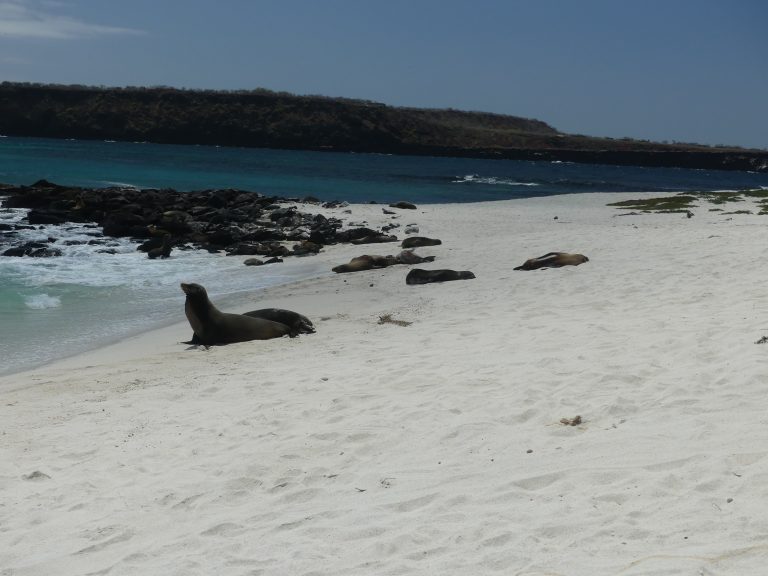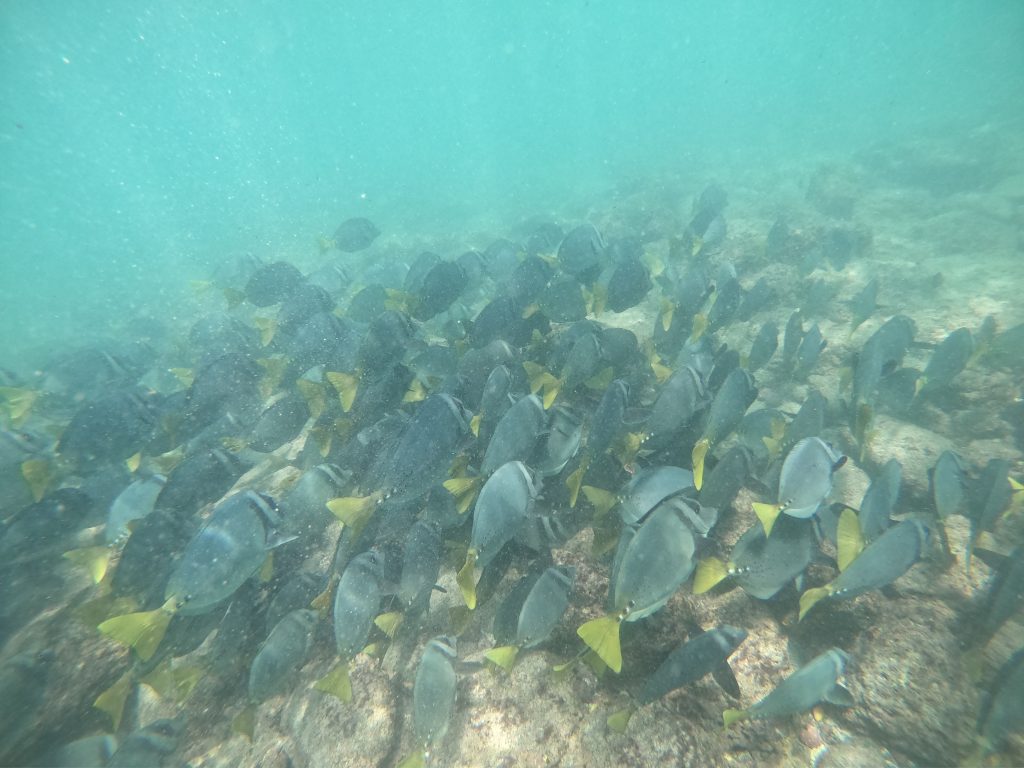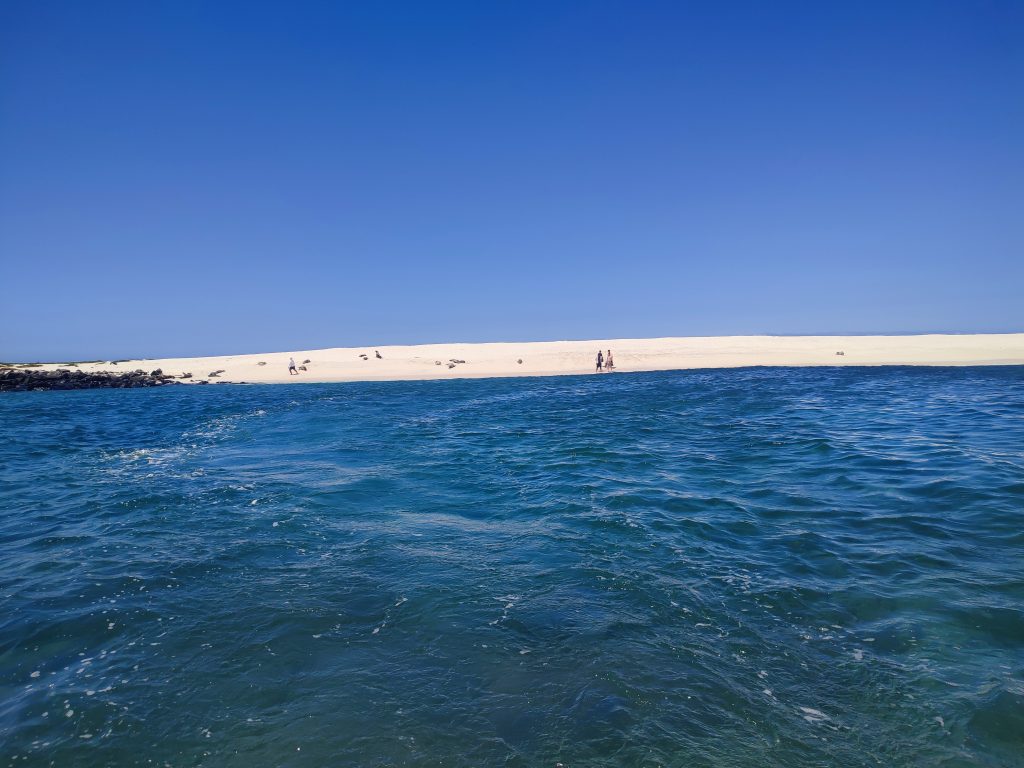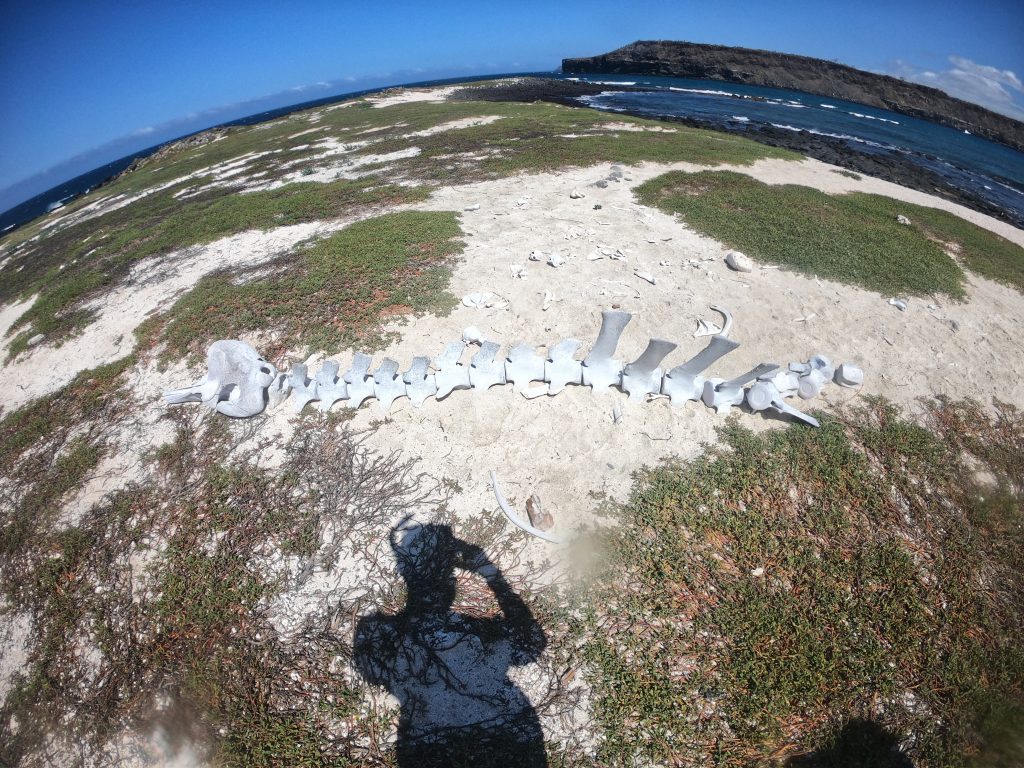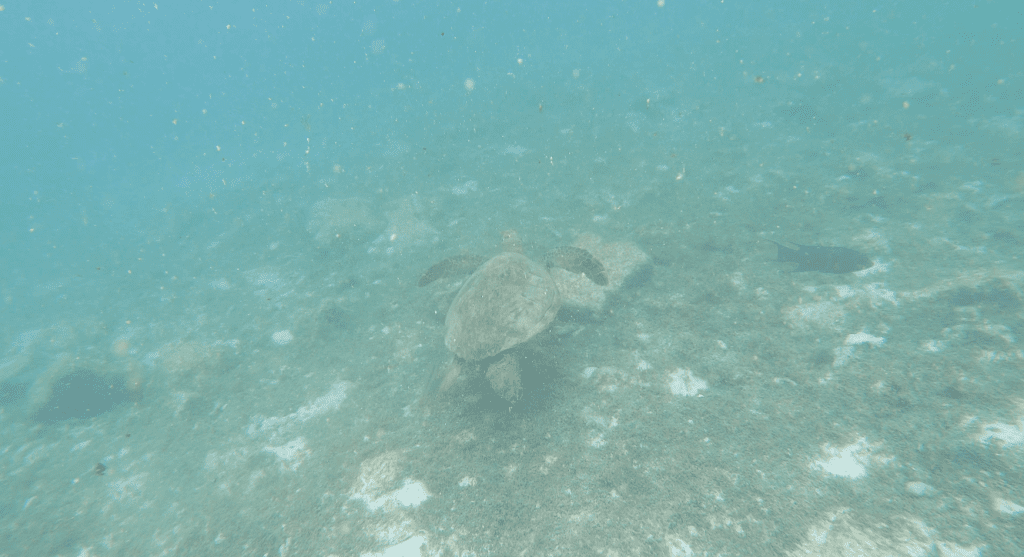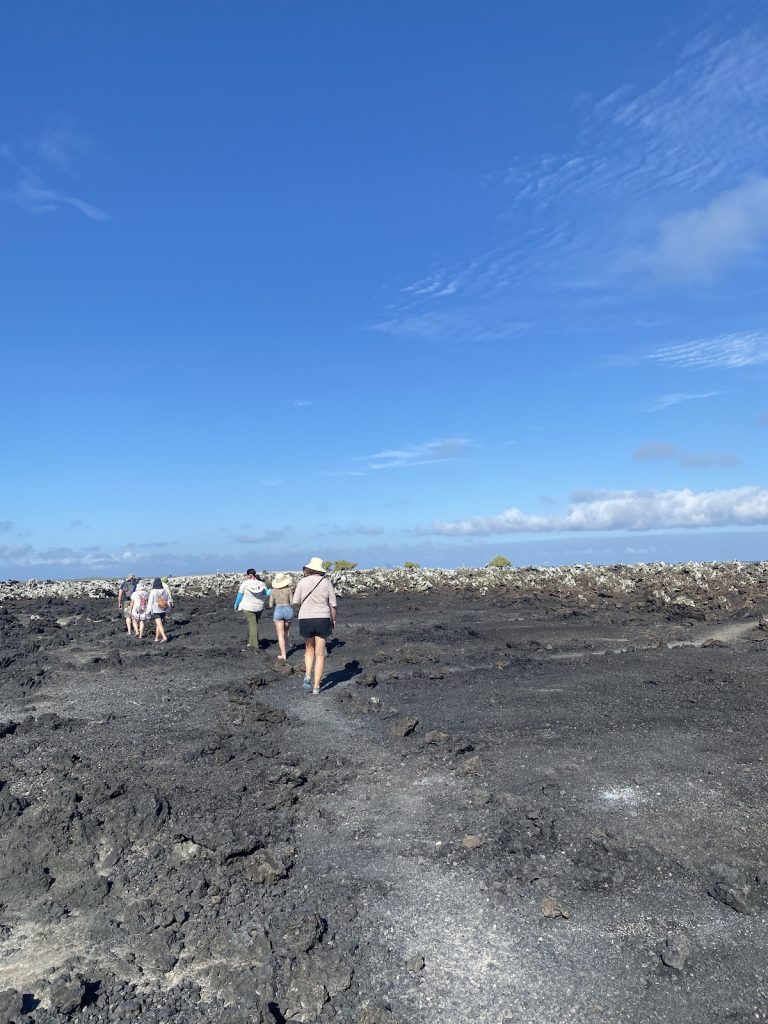Mosquera Islet is a small but stunning spot in the Galapagos, with a beautiful white sand beach, striking black lava rocks, and vibrant blue waters. Nestled between North Seymour and Baltra Islands, it’s surrounded by coral reefs, making it a fantastic location for snorkeling and observing marine life.
Thanks to its proximity to Baltra Airport, Mosquera is often the first or last stop on many cruise itineraries. Although it’s small, the islet offers an impressive range of unique birds and animals. One of the things we loved most was the freedom to explore without set pathways, allowing us to wander and take in the scenery at our own pace.
Looking back, visiting Mosquera required careful Gapapagos cruise selection – from choosing the right itinerary to timing snorkeling activities. Skip the uncertainty I faced and get a FREE personalized Galapagos trip quote from my trusted local experts who know exactly how to include this special islet in your journey. Your booking helps support both this blog and local Galapagos communities.
Table of Contents
Plan perfect trip to Ecuador & Galapagos
I spent countless hours researching everything about traveling to Ecuador, and I created this blog for fellow travel enthusiasts who want the best, most reliable information. But if you want to save time, we’ve partnered with the top local agency to plan your dream trip.
How to Get to Mosquera Islet
Mosquera Islet is conveniently close to Baltra Island and the airport, making it an accessible yet special spot to explore. The only way to visit Mosquera is on a Galapagos cruise, so it’s worth checking that your itinerary includes a stop here. For scuba divers, there’s also the option of visiting Mosquera on a day dive from Puerto Ayora on Santa Cruz Island. Occasionally, tours to North Seymour Island also include a stop on Mosquera, giving you another chance to experience its unique charm.
Wildlife in Mosquera Islet
- The permanent colony of boisterous Galapagos sea lions on Mosquera Islet is one of the archipelago’s largest colonies.
- Bird enthusiasts are in for a treat! Mosquera is home to a Lava Bird nesting habitat, the world’s rarest gull.
- Other Mosquera birds to keep an eye out for are Blue-footed boobies, Brown pelicans, Ruddy Turnstones, Sanderlings, and Herons (Lava Heron & Yellow-crowned).
- The snorkeling activity in Mosquera is not to be missed. This is one of the greatest sites in the world to go snorkeling with playful sea lions. Look out for tropical fish, sea turtles, and sharks as well.
- If you’re lucky, you could witness Orcas sailing around the area hunting for sea lions.
Mosquera Islet Visitor Site: What to Expect
Mosquera Islet has a single designated visitor area, and after a quick briefing with our naturalist guide, we were free to explore the island on our own.
We walked the length of the stunning beach and enjoyed snorkeling right off the shore. The freedom to explore without set trails made the experience even more special, allowing us to fully immerse ourselves in this pristine wilderness.
After a wet landing on the soft white sand, we were greeted by curious Galapagos sea lions, who often come closer to check out human visitors. Along the beach, we also spotted marine iguanas and the vibrant Sally Lightfoot crabs—each creature adding to the island’s unique charm.
The large sea lion population on Mosquera occasionally attracts orcas, also known as killer whales, to its waters. These clever predators sometimes approach the coast to hunt sea lions as they enter the ocean. If you spot an orca during your visit, consider yourself incredibly lucky—unfortunately, our group didn’t have such luck this time.
For bird watchers, Mosquera’s beach is a must-visit to see the breeding colony of Lava Gulls. With only about 400 nesting pairs in the world, this species is unique to the Galapagos. Lava gulls are easily recognized by their sooty grey feathers and dark brown heads and are often unfazed by human presence. Alongside them, we spotted wading shorebirds and lava herons foraging along the shore, while boobies and pelicans frequently swept by in search of fish.
Snorkeling in Mosquera Islet
Mosquera’s tranquil, clear waters are brimming with marine life, making it a snorkeling paradise. Close to shore, vibrant coral reefs shelter an array of fascinating creatures—rays, sea turtles, reef sharks, barracudas, moray eels, and schools of colorful fish, including hawkfish. Snorkeling here was truly unforgettable, offering an up-close look at the incredible biodiversity that makes the Galapagos so unique.
Trust me, while Mosquera is small, its combination of rare birds and playful sea lions makes it unforgettable! Want an expertly planned cruise itinerary that ensures you don’t miss these unique wildlife experiences? Get a FREE quote from my recommended local agency. Your booking supports this blog and local Galapagos businesses.
Diving in Mosquera Islet
Day diving at Mosquera Islet is also possible from Puerto Ayora, often paired with dives at Gordon Rocks or Seymour Channel. Mosquera’s calm waters and gentle currents make it an ideal spot for beginner and intermediate divers.
Underwater, divers can explore a sandy ocean floor dotted with garden eels and pelagic fish, as well as a rocky wall that slopes into deeper water at depths of 15-18 meters. The area is home to both blacktip and whitetip reef sharks, and it’s a prime location for spotting scalloped hammerheads. Divers can also keep an eye out for various rays, including stingrays, eagle rays, and mobulas, adding to the incredible diversity of marine life found here.
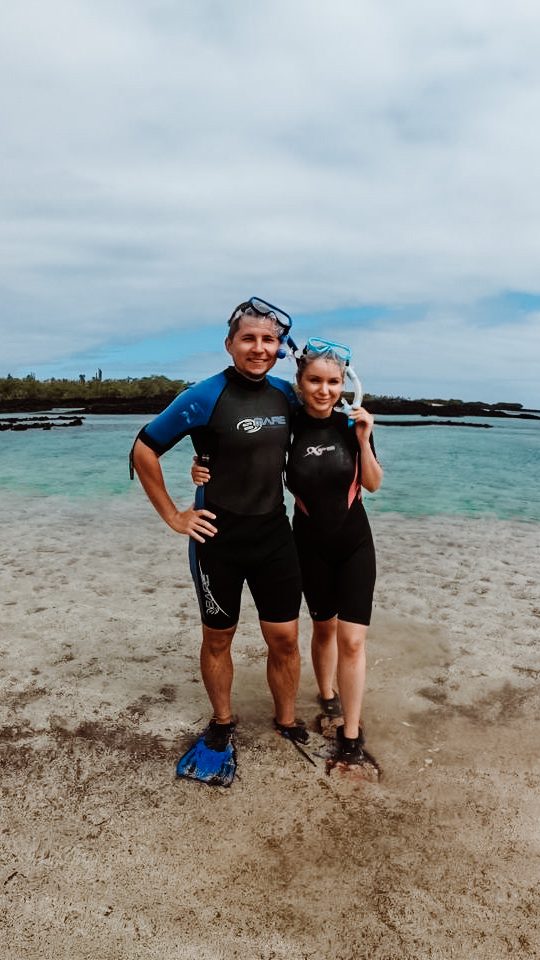
Planning trip to Galapagos Islands?
My wife and I spent two weeks on these magnificent islands, visited nearly every possible tour, and explored as much as we could. I shared all the important details in my comprehensive Galapagos Islands Travel Guide, where I cover everything you need to know about planning a trip to the Galapagos.
Galapagos Islands travel might surprise you with extra fees to enter the islands, the complicated logistics between islands, booking tours, and knowing which spots are free to explore and which ones are not. I’ve covered it all in this Galapagos Travel Guide.
Also, if you’re planning a trip to the Galapagos, make sure to use my link for discounted hotel prices via Booking.com. It really helps support my blog!
Bottom Line
Mosquera Islet might not initially seem like a top Galapagos attraction, but it has so much to offer. Here, you can freely explore the stunning white sand beach alongside friendly sea lions.
For bird enthusiasts, it’s a prime spot to catch a glimpse of the rare Galapagos lava gull—a must-see for any serious birder. Snorkelers and divers are also in for a treat, with plenty of surprises awaiting in the waters around Mosquera. If luck is on your side, you might even spot orcas or hammerhead sharks in the deeper waters. Mosquera makes a perfect start or end to any Galapagos adventure, offering a blend of tranquility and wildlife that leaves a lasting impression.
Plan perfect trip to Ecuador & Galapagos
I spent countless hours researching everything about traveling to Ecuador, and I created this blog for fellow travel enthusiasts who want the best, most reliable information. But if you want to save time, we’ve partnered with the top local agency to plan your dream trip.

